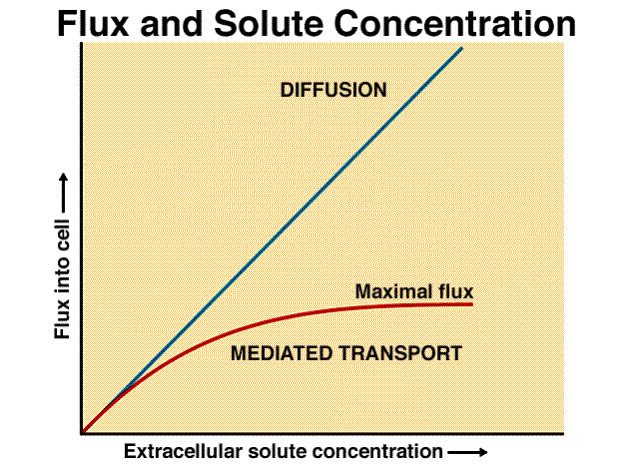- Messages
- 187
- Reaction score
- 976
- Points
- 103
Yeah...that really was a good explanation. A big round of applause !You guys have raised good points and I admit I have made a mistake.
If there is a greater concentration gradient, more energy will be required to maintain that concentration gradient. However, instead of affecting the rate of the transport, the channel proteins will expend more energy to maintain it (so that the rate of active transport remains constant). So assuming there is enough energy, the rate of active transport does not change if concentration gradient changes.
However:
Mediated transport here means active transport. 'Flux' is rate of transport. (Source)
- If energy is in limiting supply (eg. because there is limited amount of O2 or glucose so that there isn't enough ATP) then the rate of active transport will change based on the change in concentration gradient, because there isn't excess energy available to maintain a high gradient.
- If not ALL the channel proteins are involved in active transport (ie some are 'free') then increasing concentration gradient will increase rate of active transport until all the proteins are 'occupied', after which the rate remains constant. Have a look at this:

When the solute concentration outside the cell increased, the diffusion rate increased linearly. Active transport rate also did increase. The reason it stopped increasing after a while is because all the membrane proteins were 'fully occupied'.
The reason I'm saying the above is just so if someone had similar confusions to me hopefully this will clear it up.
In our questions unless otherwise stated I believe we are to assume there is both enough energy and that all channel proteins are working so again you're right





